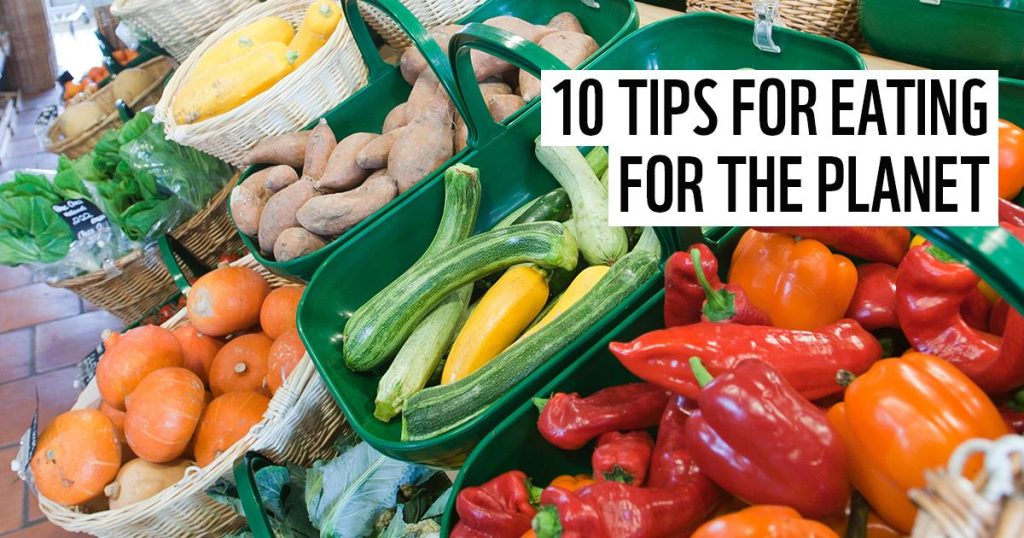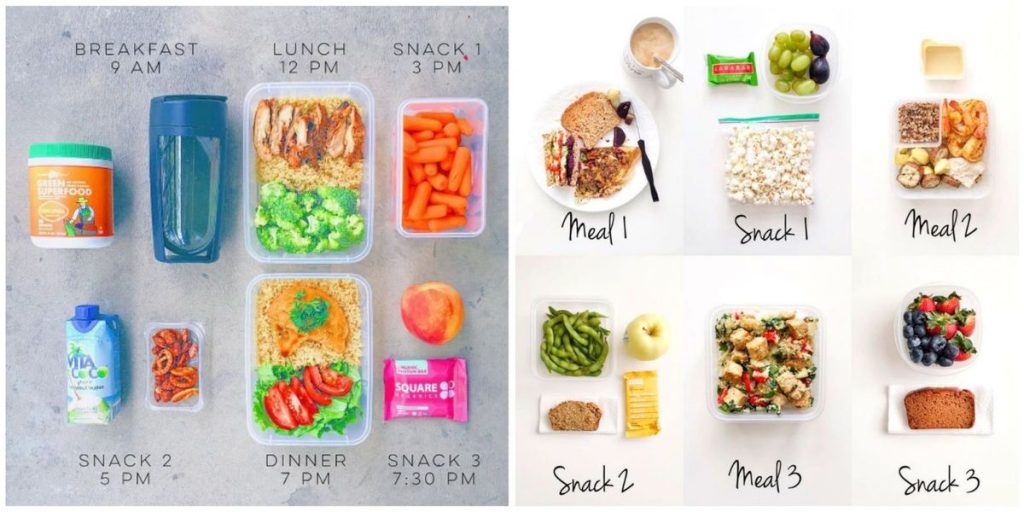In recent years, there has been a notable shift in the way people approach their diets. More and more individuals are choosing plant-based and vegan foods as part of their daily meals. This change isn’t just about personal health; it’s also a response to the growing concern for the environment and animal welfare. In this comprehensive guide, we will explore the world of plant-based and vegan foods, delving into their sustainability, delectable recipes, plant-based meat alternatives, and satisfying desserts and snacks.
Table of Contents
ToggleSustainable and Eco-Friendly Eating
Sustainability has become a buzzword in the food industry, and for a good reason. Our dietary choices have a profound impact on the environment, from greenhouse gas emissions to water usage and deforestation. Plant-based and vegan diets are increasingly recognized as one of the most effective ways to reduce our carbon footprint and promote eco-friendly eating. Here’s why:
- Reduced Greenhouse Gas Emissions: The livestock industry is a significant contributor to greenhouse gas emissions. Cows, in particular, release methane, a potent greenhouse gas, during digestion. By choosing plant-based foods over animal products, you can significantly reduce your carbon footprint.
- Conservation of Water Resources: Animal agriculture is incredibly water-intensive. Producing a pound of beef, for instance, requires thousands of gallons of water. In contrast, plant-based foods generally have a lower water footprint, making them a more sustainable choice for water conservation.
- Preservation of Natural Habitats: The expansion of animal agriculture often leads to deforestation and the destruction of natural habitats. Choosing plant-based foods helps mitigate this issue by reducing the demand for land to raise livestock.
- Reduced Food Waste: Plant-based diets tend to generate less food waste. Fruits, vegetables, and grains have longer shelf lives compared to perishable animal products, which often spoil quickly.
- Supporting Biodiversity: Vegan and plant-based diets typically rely on a more diverse range of crops and ingredients. This diversity can help support biodiversity by reducing the monoculture farming practices associated with some animal agriculture.

Vegan Recipes and Meal Ideas
Transitioning to a vegan or plant-based diet doesn’t mean sacrificing taste and variety in your meals. In fact, it opens up a world of exciting culinary possibilities. Here are some delicious vegan recipes and meal ideas to get you started:
- Vegan Buddha Bowl: A colorful and nutritious bowl featuring a mix of roasted vegetables, grains like quinoa or brown rice, legumes, and a flavorful sauce.
- Mushroom and Spinach Vegan Stuffed Shells: Creamy cashew-based ricotta and a savory mushroom and spinach filling make these stuffed shells a comforting and satisfying meal.
- Chickpea and Vegetable Curry: A fragrant and spicy curry loaded with chickpeas, tomatoes, and a blend of aromatic spices, served over steamed basmati rice.
- Vegan Tacos: Swap out ground meat for seasoned black beans or lentils in your tacos. Top them with fresh salsa, guacamole, and shredded lettuce for a burst of flavor.
- Vegan Pad Thai: A classic Thai noodle dish made vegan with tofu, rice noodles, and a tangy tamarind sauce.
- Vegan Pizza: Create your own pizza masterpiece with vegan cheese, a variety of veggies, and a crispy, homemade crust.
- Creamy Vegan Pasta: Make a luscious pasta sauce using cashews, nutritional yeast, and almond milk for a rich and creamy texture.
- Vegan Breakfast Burrito: Fill a tortilla with scrambled tofu, black beans, avocado, and salsa for a hearty breakfast or brunch option.
- Vegan Sushi: Experiment with vegetable, avocado, and tofu-based sushi rolls, served with soy sauce and wasabi.
- Vegan Smoothie Bowls: Blend fruits like bananas, berries, and mangoes with plant-based milk, and top with granola, nuts, and seeds for a nutritious breakfast.
These are just a few examples of the countless vegan recipes available. The versatility of plant-based ingredients allows for endless culinary creativity.

Plant-Based Meat Alternatives
One of the reasons people hesitate to adopt a vegan or plant-based diet is the misconception that they’ll miss out on the taste and texture of meat. However, the rise of plant-based meat alternatives has changed the game. These innovative products offer the same mouthwatering flavors and textures as traditional meat but without the ethical and environmental concerns. Here are some popular plant-based meat alternatives:
- Beyond Meat: Beyond Meat offers plant-based burgers, sausages, and ground meat that sizzle, sear, and satisfy like their animal-based counterparts.
- Impossible Foods: Impossible Foods is known for its Impossible Burger, which “bleeds” beet juice and has a taste and texture remarkably similar to beef.
- Tempeh: Made from fermented soybeans, tempeh is a versatile and protein-rich meat substitute used in various dishes like stir-fries and sandwiches.
- Seitan: Also known as wheat gluten, seitan is a high-protein meat substitute that can be grilled, sautéed, or added to stews.
- Tofurky: Tofurky products include vegan deli slices, sausages, and roast options, making them perfect for holiday dinners.
- Jackfruit: With its fibrous texture, jackfruit makes an excellent pulled pork or shredded chicken alternative in sandwiches and tacos.
- Lentils and Mushrooms: Combining cooked lentils with finely chopped mushrooms creates a meaty texture that works well in various recipes.
- Nut Loaf: A blend of nuts, grains, and vegetables, nut loaf is a hearty, meat-free option for a traditional roast dinner.
These plant-based meat alternatives not only cater to vegans and vegetarians but also appeal to meat-eaters looking to reduce their meat consumption for health or environmental reasons.
Vegan Desserts and Snacks
A common misconception about veganism is that it requires giving up beloved treats like desserts and snacks. However, vegan desserts and snacks are not only abundant but also incredibly delectable. Here are some mouthwatering options:
- Vegan Chocolate Cake: Moist and decadent chocolate cake made without eggs or dairy, often topped with a rich vegan chocolate ganache.
- Vegan Ice Cream: Creamy and delicious dairy-free ice cream options made from almond, coconut, or soy milk, available in various flavors.
- Vegan Cookies: Chewy or crispy vegan cookies in flavors like chocolate chip, oatmeal raisin, and peanut butter.
- Fruit Sorbets: Refreshing sorbets made from pureed fruit, sugar, and water, available in flavors such as raspberry, mango, and lemon.
- Energy Bites: Nutrient-packed bites made from oats, nuts, dried fruits, and sweeteners like maple syrup or dates.
- Vegan Cheese and Crackers: A platter of vegan cheeses, crackers, and fresh fruit for a delightful and savory snack.
- Vegan Popcorn: Air-popped popcorn seasoned with nutritional yeast
Conclusion
In a world where conscious consumption and sustainability are gaining prominence, plant-based and vegan foods have emerged as a compelling and delicious choice for individuals seeking to make a positive impact on their health, the environment, and animal welfare. This comprehensive guide has explored the multifaceted realm of plant-based and vegan cuisine, encompassing sustainable eating practices, a myriad of delectable recipes, innovative plant-based meat alternatives, and delightful vegan desserts and snacks.
More Stories
Real Iranian Saffron: A Culinary Treasure in Dubai
Iranian saffron, often referred to as “red gold,” is renowned for its unique flavor, vibrant color, and health benefits. Originating...
7 Family-Friendly Recipes Kids Will Love
Finding recipes that appeal to both adults and children can sometimes be a challenge, but with the right selection, mealtime...
The Complete Guide to Golden Corral Menu Prices
Family gatherings and casual meals out have been held at the Golden Corral for many years. Many people like eating...
The Beginner’s Guide to Salumi
Embark on a culinary adventure with our comprehensive guide to cured meats. Tailored for enthusiasts, stockists, and families in Australia,...
Enjoy A Variety Of Delicious Food Items At Haldiram’s In Bangalore
The hustle and bustle of daily life includes a consistent whirlwind of liabilities, regular routines, and work. Amid this whirlwind,...
The Role of AI in Personalizing Nutrition Plans: Beyond the One-Size-Fits-All Diet
In the world’s quest for better health and wellness, Artificial Intelligence (AI) is reshaping the landscape of nutrition, offering bespoke...


